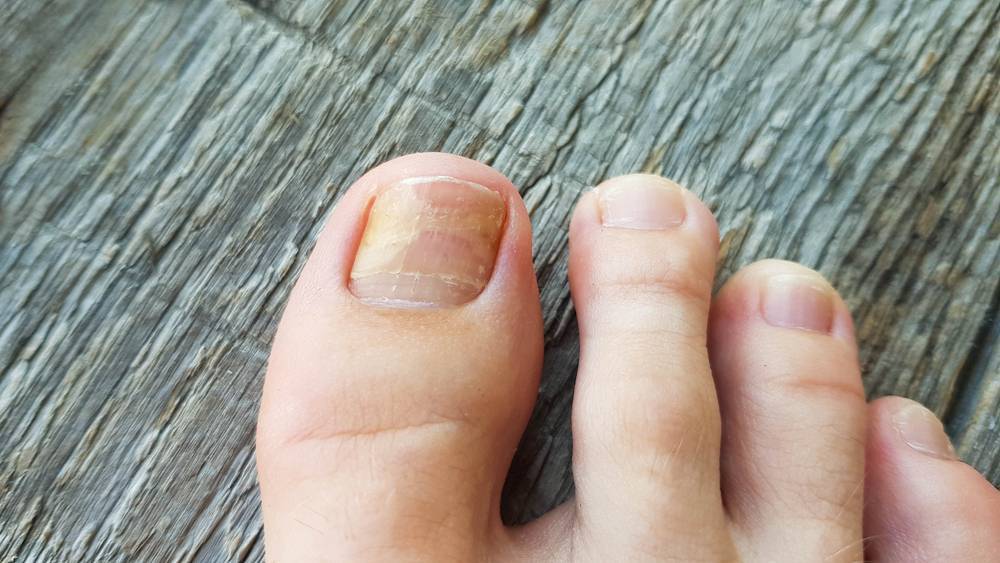Along with various types of bacteria, fungi exist all over your body. When there is an overgrowth of fungi in your nails, a fungal nail infection occurs. This can manifest as discolouration of your fingernails or toenails. Your nails will become thicker and might start to crumble at the edges. Left untreated, the fungal infection could spread to other nails or even your skin.
A warm or moist environment is the ideal breeding ground for fungi. You are thus more likely to get fungal infection in your toenails than your fingernails, as your toes are usually cramped into warm, moist shoes. Coming into contact with someone who already has fungal nail infection increases the risk of contracting it yourself.
Who Is at Risk of a Fungal Nail Infection?
You are more likely to get a fungal nail infection if you:
- are diabetic
- above 65 years of age
- wear artificial nails
- have a weak immune system
- have a nail injury
What Are Some Home Remedies for Treating Fungal Nail Infection?
If this has happened multiple times and you are familiar with how a fungal infection in its early stages looks like, you may try some of these home remedies to prevent its progression. However, if it is the first time that you notice your nails looking odd, with accompanying pain, we advise that you skip this section, and visit a healthcare professional for a proper diagnosis without delaying appropriate treatment.
-
Vicks VapoRub
Vicks VapoRub is an over-the-counter (OTC) medication used to suppress coughs and relieve muscle aches. However, its active ingredients, camphor and eucalyptus oil, have been found by some to be effective in treating toenail fungus. To use, apply a small amount of Vicks VapoRub at least once a day to the affected area.
-
Tea tree oil
Tea tree oil has anti-fungal and anti-inflammatory properties that is effective in reducing fungal growth in nails. Dip a cotton swab in tea tree oil and apply it onto the affected nail. If you have sensitive skin, you can dilute the oil with a carrier oil like coconut oil or almond oil before applying it onto your nails.
-
Garlic
Garlic is known to have antimicrobial and anti-fungal properties. Crush a garlic clove and place on the affected nail for half an hour. Do remember to wash your feet thoroughly before and after using the garlic.
How Is a Fungal Nail Infection Treated?
If you suspect a fungal nail infection and none of the home remedies show any results, it might be best to consult a doctor. They may prescribe any of the following types of medication.
-
Anti-fungal Oral Medications
These medications carry side-effects and have different interactions with other medications. So follow what your doctor prescribes strictly, and declare any other medications that you might be taking on the side. Skipping a dose might lead to further infection as the fungus might become resistant to the medication.
-
Medicated Nail Polish
Medicated nail polish is usually applied to the nails once a day. Do not apply it only on the nails – apply under the nail and on the surrounding skin as well. Apply it at around the same time every day (usually at bedtime) so that you do not forget. You can improve the results by trimming your nails regularly. Patience is key here as it may take 6 months or more before you notice improvement in your nails.
-
Medicated Cream
Just like the nail polish, medicated cream should be applied on and around the nail and left undisturbed. Trim and file the nail before using the cream so that the medication penetrates well.
How to Prevent a Fungal Nail Infection?
Fungal nail infections can take months to get better as that’s how long it takes new nails to grow. Hence, prevention is better than cure. Here are some ways you can prevent a fungal nail infection.
- Never allow your fingers and toes to remain wet. After washing your hands, pat them dry. Look for breathable cotton socks that can absorb sweat.
- Discard old shoes and socks as they get worn out.
- Trim your nails regularly and disinfect your nail clipper after using.
- You can get fungal nail infection from pedicure and manicure equipment. Find a salon that has good hygiene practices.
- Avoid using nail polish and artificial nails as much as possible.

